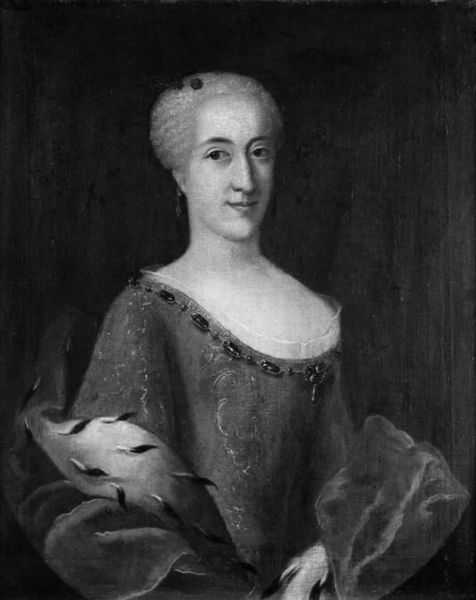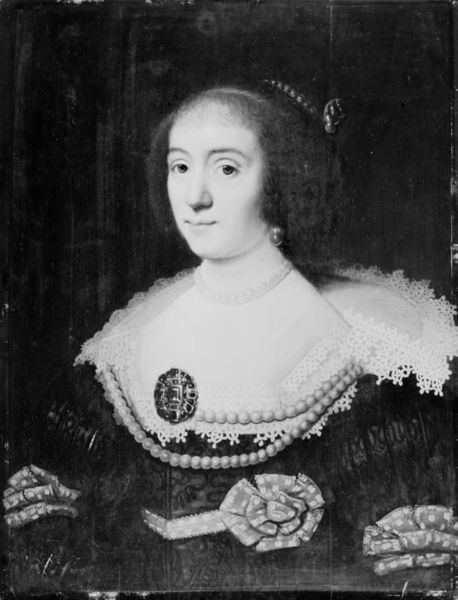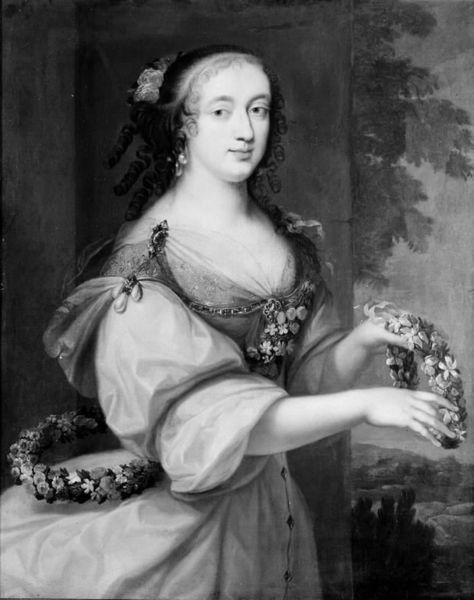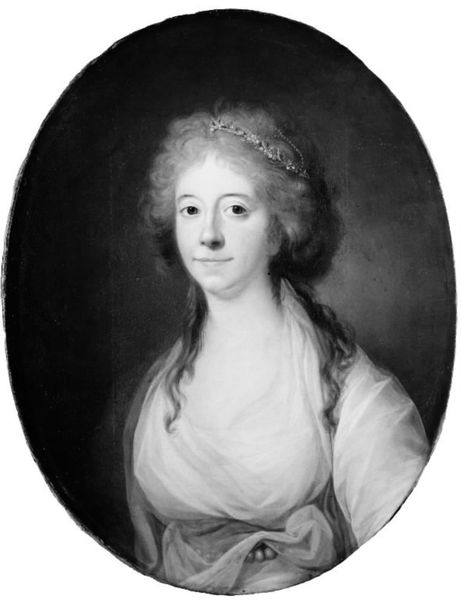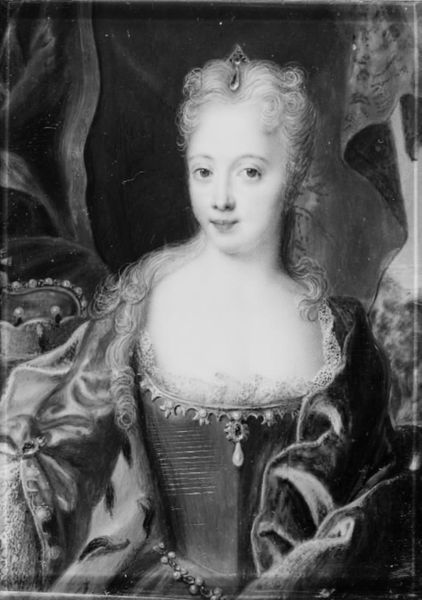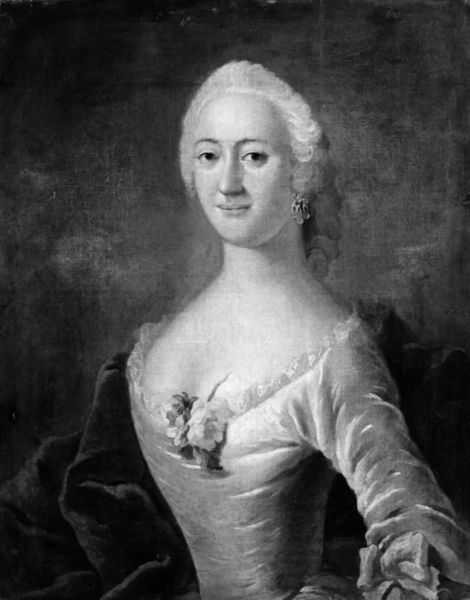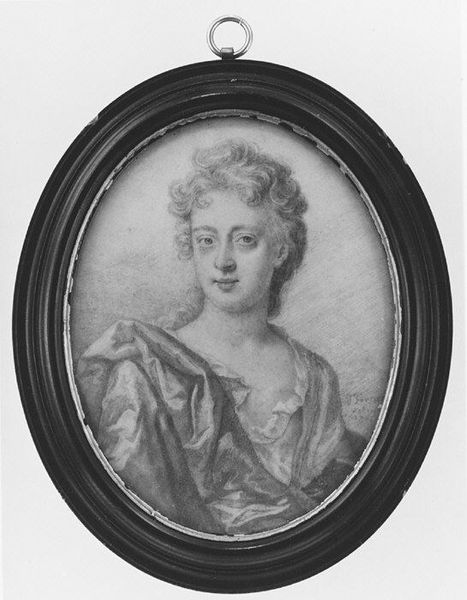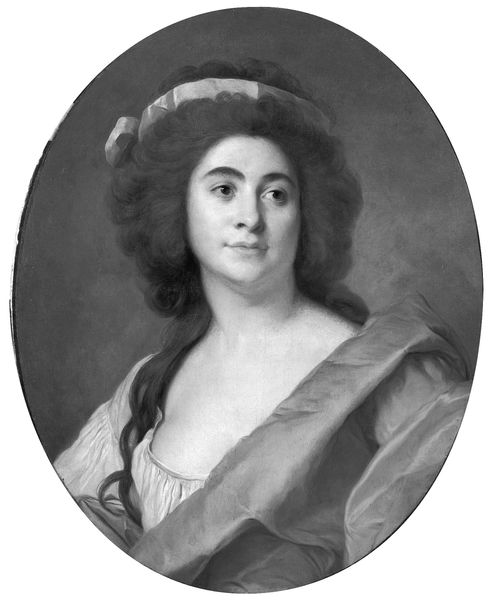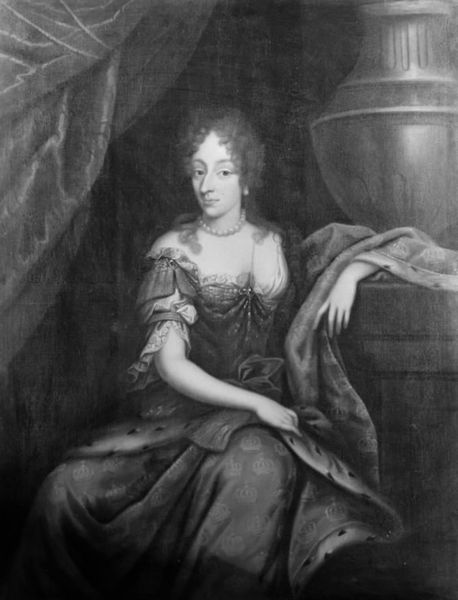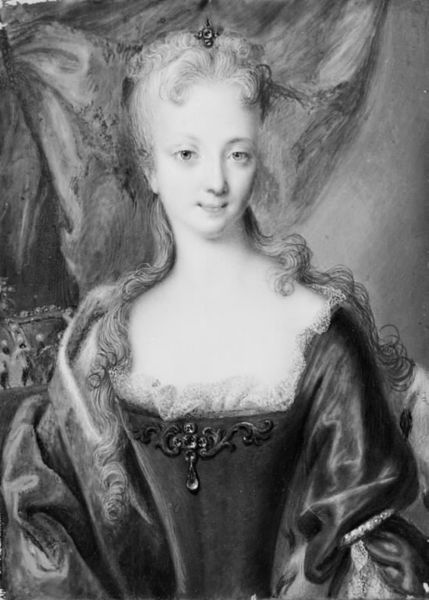
painting, oil-paint, canvas
#
portrait
#
baroque
#
portrait
#
painting
#
oil-paint
#
canvas
#
black and white
#
realism
Dimensions: 76 cm (height) x 63 cm (width) (Netto)
Curator: Right now we’re standing in front of Jacob Heinrich Helbigk's "Portrait of a Lady," created in 1734. It's an oil painting on canvas, a fantastic example of Baroque portraiture hanging here at the SMK. Editor: Well, she looks rather formidable, doesn't she? All that ornate clothing, a serious expression. Immediately makes you wonder what her story is. It has an almost severe, haunting kind of gravity to it. Curator: Precisely. Helbigk, as a portraitist during the Baroque era, was deeply concerned with portraying not only the likeness, but also the status of his sitter. Note the intricate patterns of her dress, which indicate nobility, as well as the cool color palette, the pearl embellishments, and the calculated use of chiaroscuro. Each element underscores her place in society. Editor: The contrast between the ornate clothing and her relatively plain hairstyle is intriguing. You see these small dark flowers tucked in. It almost suggests some underlying restraint or... a hidden melancholy. Curator: I think you might be onto something. Beyond the obvious display of wealth, the work hints at something more internal. The lady's gaze is direct, yet there's a certain sadness in her eyes, a psychological depth which pulls this away from pure formal representation. The overall effect, with that controlled palette, feels very… calculated. Editor: Do you think that the Baroque aesthetic emphasizes the performative aspect of portraiture? As if every fold, every jewel, has a very specific intended message, not just some attempt at photographic likeness? It's so self-consciously posed, staged. Curator: Yes, without a doubt. Helbigk used the language of the era. Each element, including the posture, functions as a symbol that adds to the overall representation of power. I would argue that in this context, though, her humanity seems to subtly undermine the more obvious symbolic tropes. Editor: It almost gives me the impression that we are meeting a flesh and blood individual, not simply seeing an emblem of wealth. Curator: That’s an incredibly perceptive observation. This interplay of presentation and persona is really the key, isn’t it? It speaks to a dynamic struggle within herself. Editor: Thinking about her, I am seeing not a woman simply wearing her wealth, but instead feeling almost imprisoned by the very symbols of status surrounding her. Curator: Indeed. When we leave today, hopefully you’ll consider those complicated facets that transform a piece of history into something enduringly and psychologically fascinating.
Comments
No comments
Be the first to comment and join the conversation on the ultimate creative platform.
